
For decades the pursuit of the perfectly manicured lawn has consumed many a sunny weekend. Nary a dandelion could be found on the immaculate green carpet spread out in front of the typical home.
Unfortunately, these perfect landscapes are less than ideal for the pollinators who live with us.
Back in 2006, with the discovery of Colony Collapse Disorder (CCD), the world finally began to understand the importance of a healthy pollinator population and how much we depend on them.
Although CCD specifically is no longer as prevalent as it once was, it brought to our attention a significant problem – the steady decline of our pollinators. Since then, these helpful bugs have been the subject of much scientific research.
Bees are the most well-known pollinator, but butterflies, moths, hummingbirds, and even bats all do their part too. However, the loss of their natural habitats and prevalent pesticide use has done serious damage to their numbers.
More people are opting to give up the perfect green lawn in favor of creating a pollinator paradise.
Folks are discovering the joys of less lawn to mow and the busy buzzing community gathering among the flowers and trees of their pollinator-friendly yard.
It can feel overwhelming tackling such a large issue.
It doesn’t have to be, start small. Start in your own backyard with simple, easy changes.
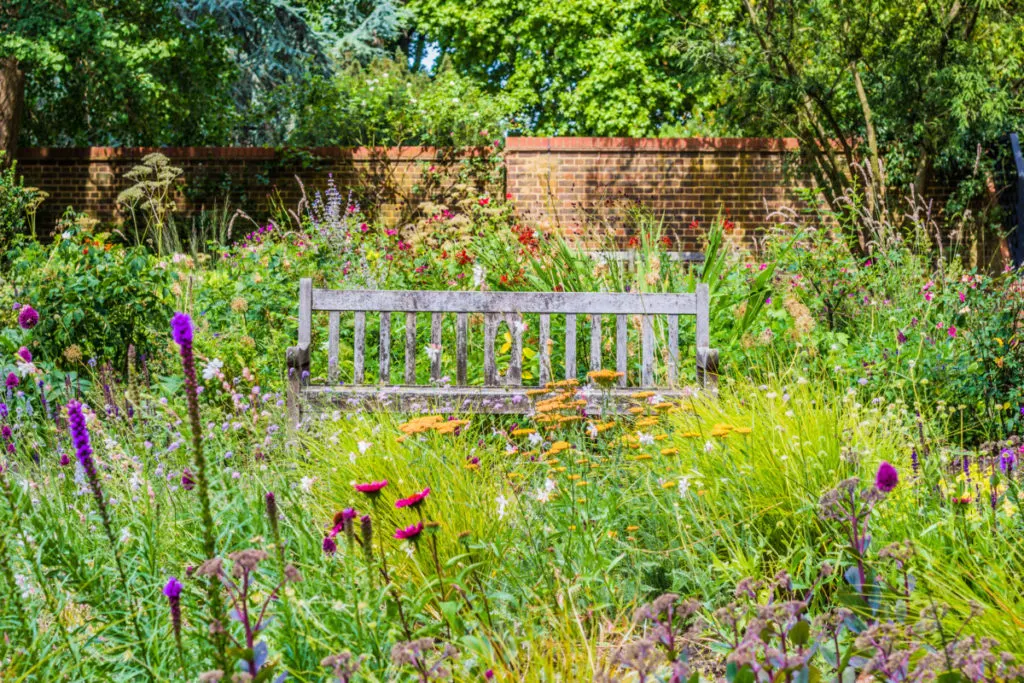
Planting a pollinator garden is less about a structured, planned out landscape, and more about letting your lawn get a little wild.
Let’s walk through what it takes to turn your yard into a space that welcomes pollinators of all types.
The Lay of the Land
For starters, take a walk around your yard and take some notes. Where is it sunny or shady? What areas get full sun, and for how long? Both pollinators and the plants they need love full sun to partial shade. Maximize your planting in these areas and choose your plants for each space accordingly.
Do you have any areas of your property that are wild and overgrown? If not, are there spaces where you can let nature reclaim a bit of your lawn to provide shelter for native pollinators?
Choosing the Best Plants
While most people assume that brightly colored flowers are the best option for a pollinator garden, there’s much more to think about than just the color of your blooms.
Native flowering plants are always going to be your best bet.
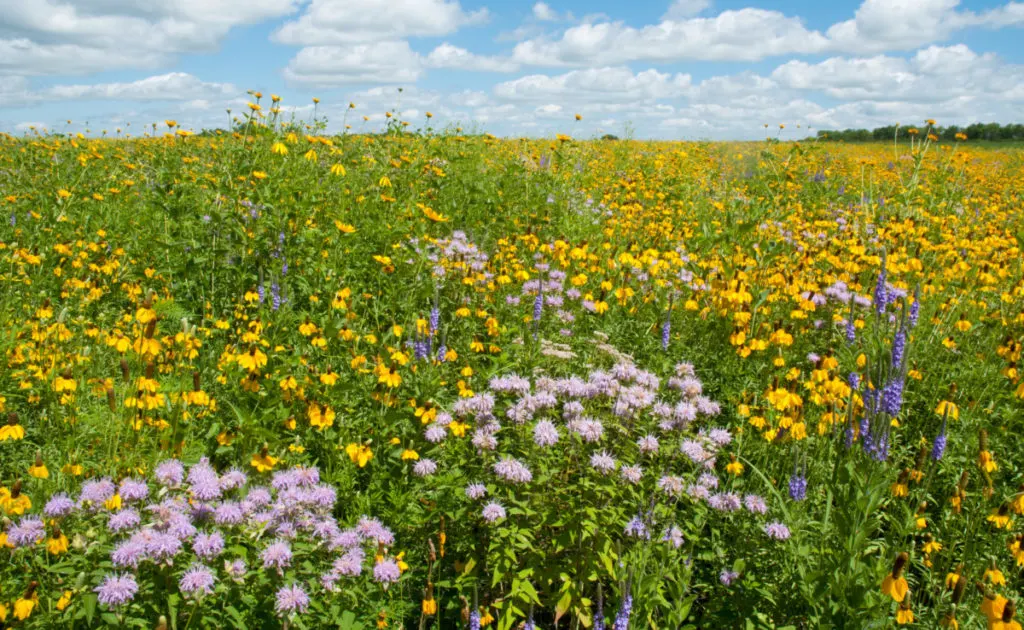
These are the plants that native pollinators in your region have been feeding on long before we started planting flowers. Native plants are also going to be easier to grow as they occur naturally where you live and have acclimated to the soil and climate conditions.
Here’s a great way to get started finding out what is native to your area. The National Wildlife Federation has put together the top 10 native plant species by region (US). A quick Google search or a call to your local extension office can help you further that list.
When you’re choosing plants, opt for perennials. Your gardening efforts will pay off as you won’t need to replace them every season, and they’ll continue to grow and fill in empty spaces each year.
If you choose other plants that aren’t native, stick with heirloom varieties.
Many of the hybrid flowers you find at your local nursery have been bred specifically for large or showy blooms. You may be surprised to learn that many of these fancy new cultivars produce little to no pollen or nectar. These flowers were bred to be appealing to us, but they aren’t beneficial for pollinators.
Take into consideration when the plants bloom.
Having flowers available for pollinators to eat and collect pollen from throughout the entire growing season is essential. Vary your selection of plants so that you have blooms from early spring through late fall.
Choose plants based on their color.
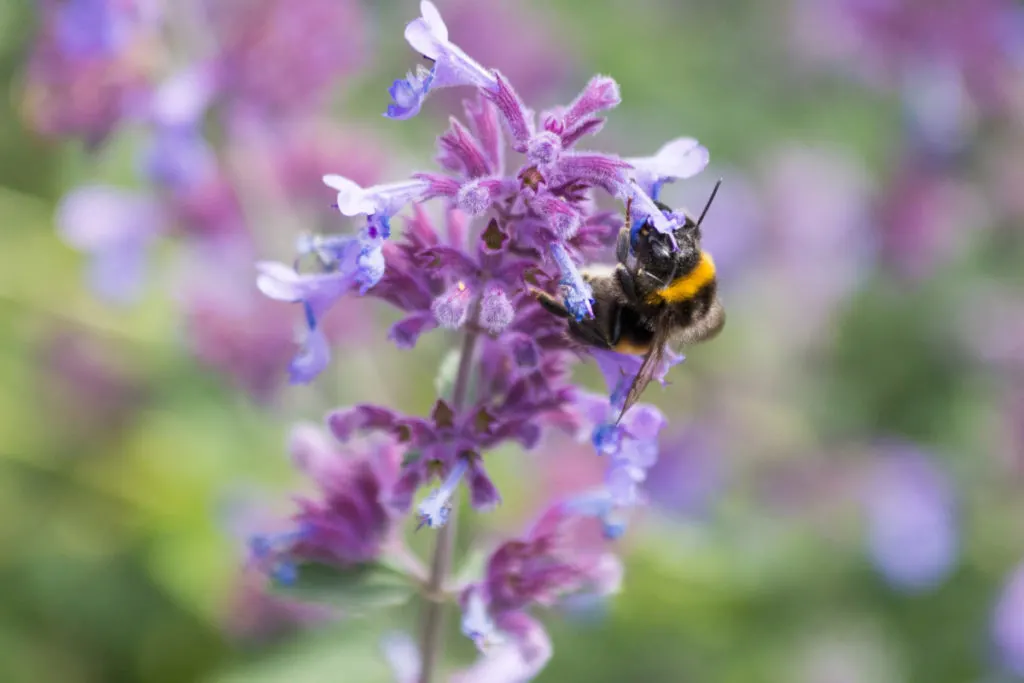
Bees are attracted to blue, purple, and yellow flowers. Be sure to plant large patches of color rather than singular plants. Try to plant at least three of each plant grouped together. This makes the flowers easier for pollinators to spot.
Don’t forget flowering trees and shrubs make great options for a pollinator garden.
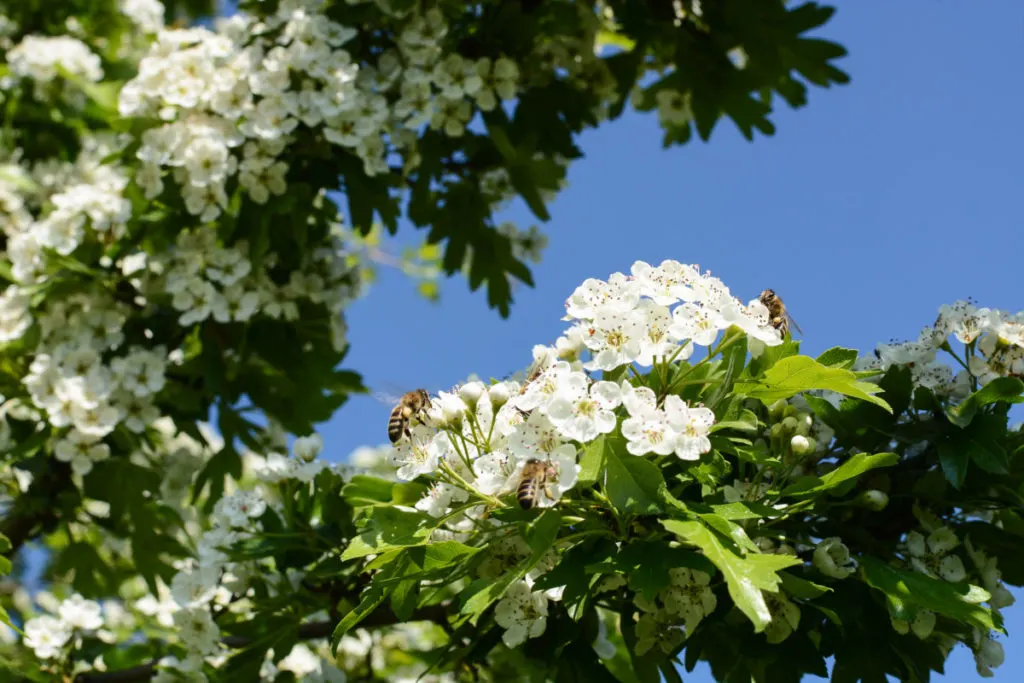
Flowering trees often bud out early in the spring, giving pollinators some of their first food of the season. I have a Hawthorn tree outside my living room window, which positively buzzes in early April from all of the pollinators visiting it.
Take into consideration flower and petal shape when planning out your garden.
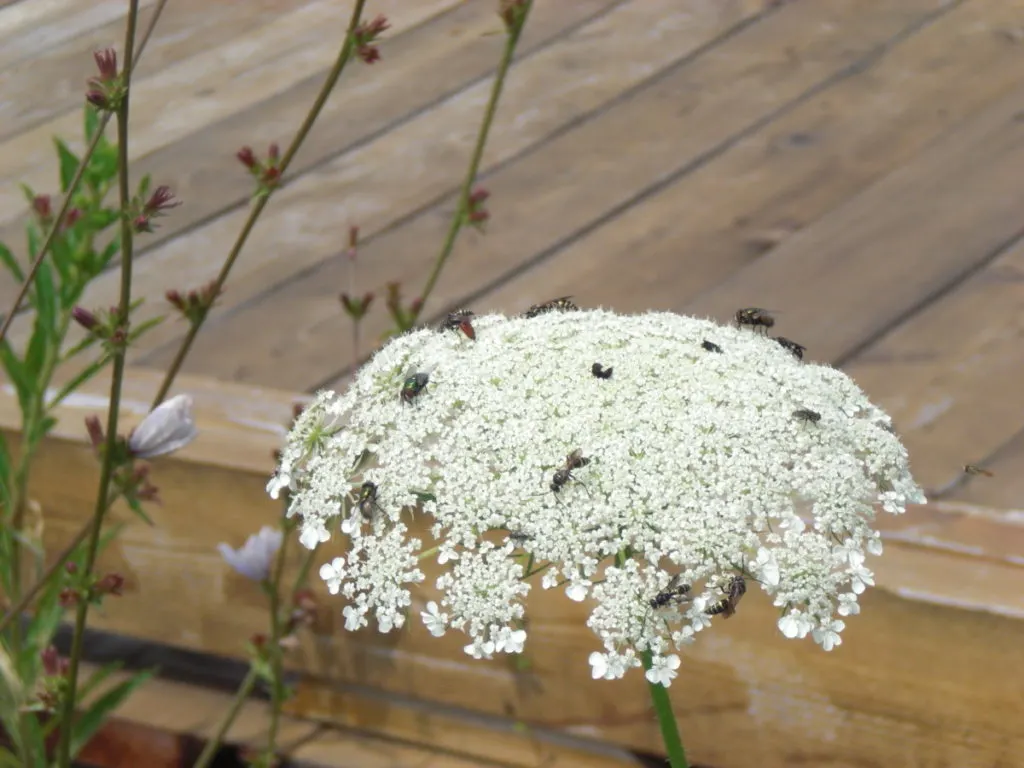
The key is diversity. (It’s a common theme if you haven’t already noticed.) Flowers with a single ring of petals (think daisies) generally produce more pollen and nectar. However, flowers with clusters (think milkweed flowers and Queen Anne’s lace) appeal to a greater range of pollinators and can feed a more diverse population. Try to plant a mix of both types.
Don’t forget about your nighttime pollinators – moths and bats. If you can, add a few plants that bloom at night to help support these nocturnal workers.
Avoid pesticides
It’s important to purchase plants that haven’t been treated with pesticides, neonicotinoids, or insecticides. Again, opting for native species is an excellent way to avoid the issue of commercial nursery spraying practices. Try to avoid the use of pesticides in your garden as a general rule. You want to create a sanctuary free of chemicals that are harmful to pollinators.
If you must use a pesticide, opt for one that isn’t harmful to pollinators and spray in the evenings when pollinators aren’t active.
Don’t forget the hummingbirds
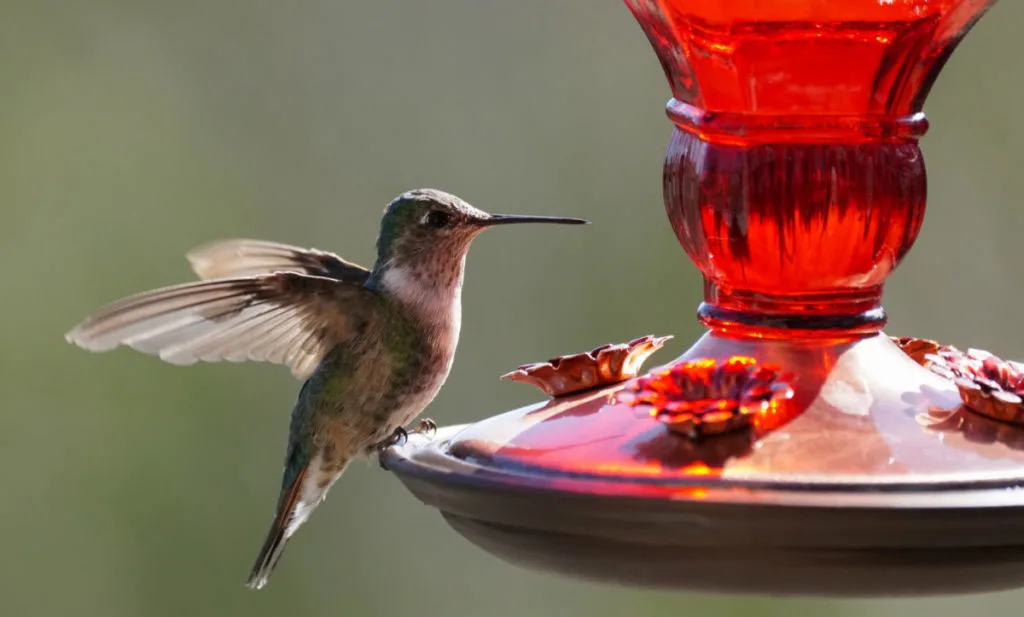
Consider adding a hummingbird feeder to your landscape. The hummingbird nectar is easy to make, and watching these crazy aerial artists come in to feed is always entertaining.
To make the nectar use a 4:1 ratio of water to white table sugar. Boil the water first and then add the sugar and stir it to dissolve. Let the nectar cool to room temperature before putting it in the feeder.
Never use honey or other types of sugars and never add red food coloring. Clean out your feeder and put in fresh nectar twice a week. Planting red flowers will also help to attract hummingbirds. If you want more tips on attracting these tiny flying jewels you’ll want to read –
The Ultimate Guide to Attracting Hummingbirds to Your Yard
Very hungry caterpillars
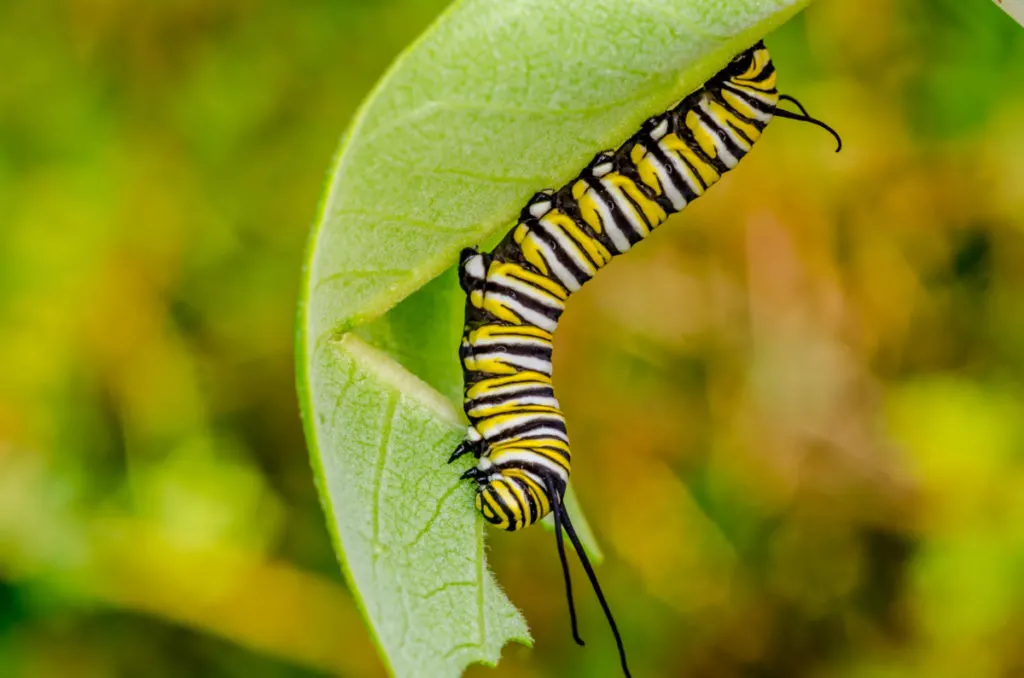
You can play host to butterfly larva by planting the food they eat. Most butterfly caterpillars will only eat a specific type of plant, so it’s important to research what each species eats. For instance, Monarch caterpillars will only eat milkweed.
And don’t forget, unlike the adult butterfly which will drink nectar, the caterpillars will be eating the leaves of the plants. So, if you see leaf damage from munching caterpillars, that’s a good thing! You can always put the plants in an area of your property where they will be out of sight if the leaf damage bothers you.
Sourcing native plants for your garden
As I’m sure you’ve noticed, native plants are vital for a great pollinator garden, but where do you find them, what’s native to your area? My first recommendation is always to check with your local agriculture extension office. These offices are a wealth of knowledge and an excellent resource for all of your gardening questions.
They can help you figure out what plants are native to your area and where to purchase them. I’ll bet most of them probably even have literature specific to your region to help you get started. And many have local pollinator gardening programs so you can certify your garden.
You can also check your local farmer’s markets or get in touch with a local gardening club. It’s not uncommon to find someone in a club who specializes in native plants. Give your local nursery a call and ask if they know where you can find native species. Even if they don’t carry them, they can usually tell you where to find them.
Provide More than Just Food
Setting up your yard to make pollinators feel at home is more than just having the right plants. Providing shelter and a place for them to nest and raise their young is equally important. And you don’t need to be a beekeeper to do it. The majority of bees actually nest on the ground or in old logs
Do bees and butterflies have access to mud for nutrients and building nests?
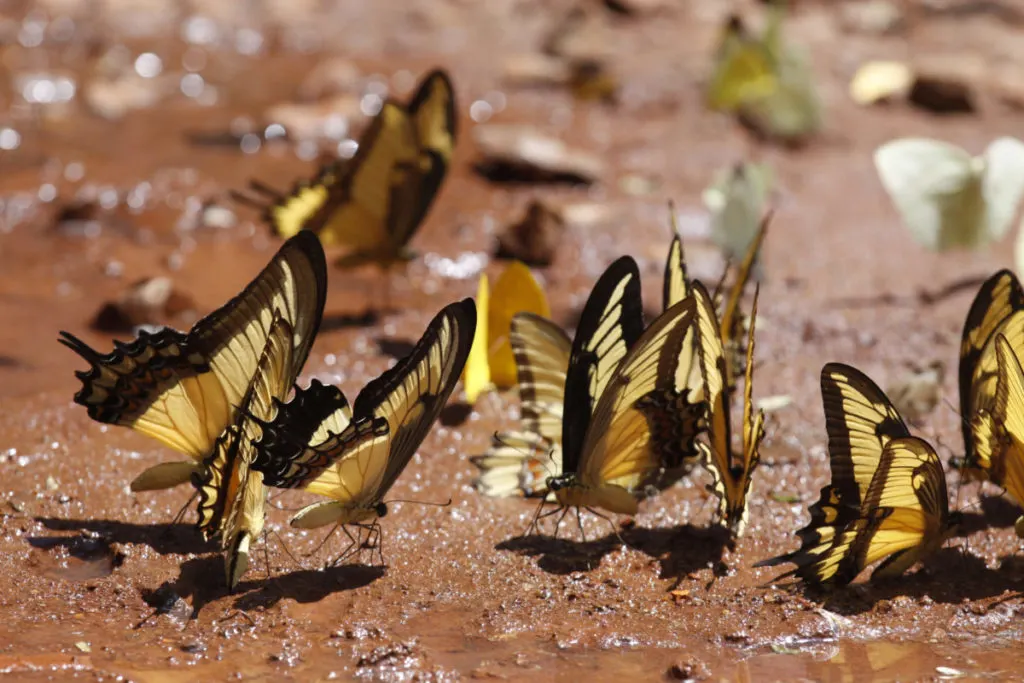
I’ll bet you already have a spot in your yard that’s a perpetual dirt patch or puddle when it rains. Consider putting a birdbath on the bare ground and keeping the area wet. If you have a leaky garden spigot, this is an excellent location for a mud patch, which provides visiting pollinators with water to drink and mud. Sprinkle the mud with wood ash or a bit of sea salt to provide bees and butterflies with the extra nutrients they need. Add water during dry spells, so the mud doesn’t dry out and change the water in birdbaths frequently, so mosquitos don’t have a place to nest.
Bee Hospitality 101
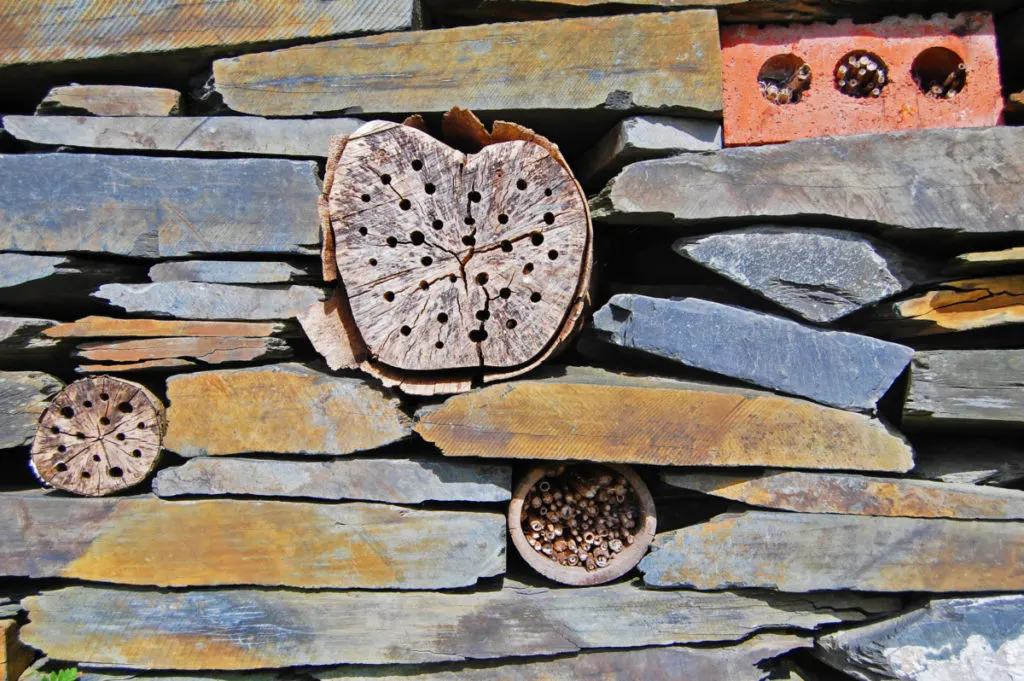
You can make a bee hotel or purchase one to set outside for bees to nest and rear their young. You can easily make a bee hotel by drilling holes into a 6″ length of log. You’ll need to drill holes of varying size form 1/8″ up to ½” in diameter and anywhere from 3 to 5″ deep.
To prevent the spread of diseases, be sure to clean out your bee hotels each year after the bees and their young have left (usually early spring). If you have a bee hotel that uses bamboo tubes, you should consider replacing them with new tubes.
Is Your Bee Hotel Actually a Deathtrap?
An even easier way to provide shelter is to leave your yard a little messy at the end of the season. Leave a few piles of leaves on the ground. Let tall grasses stand. If you have any dead limbs from trees, consider leaving a few on the ground for bees to nest in.
Bee a Lazy Gardener
Don’t mow your lawn as often. There are some species of native flowers, like white clover that nourish pollinator populations that don’t get a chance to flower if you mow frequently. Go ahead and let your lawn get a little shaggy, the bees will thank you.
At the end of the season, let your pollinator garden go.
Plants will go to seed spreading new flowers for next season. And as previously mentioned, leaf litter and other dried or dead vegetation provides a place for bees to nest. The decaying vegetation is good for your soil, as well as the pollinators you are trying to help.
Take Your Time, It Doesn’t Have to Happen Overnight
Creating a space in your landscape for pollinators can seem overwhelming, but even the tiniest effort can help. If you want to transform your space into a pollinator haven, go slowly, work over more than one season, and don’t overwhelm yourself.
Add one or two new plants here and there. Pick one area of your property to focus on, and next year focus on another.
The great thing about letting your space get a little wild is that many of the plants you’ll be using are perennials – this means less upkeep in the areas you’ve already transformed.
Welcome All Bugs
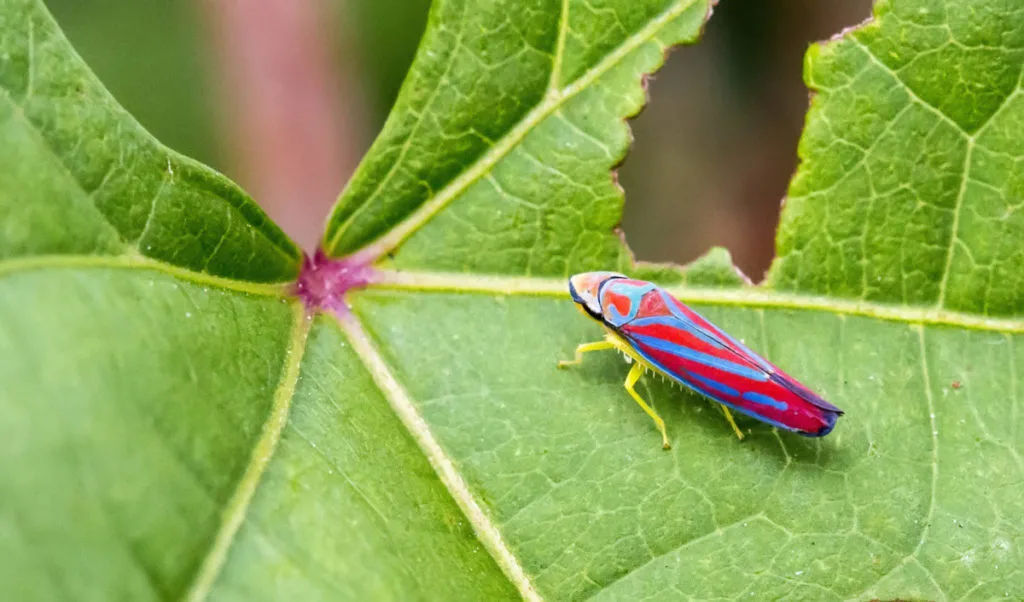
While our pollinators are important, they aren’t the only insects struggling. You may be surprised to learn that all insects are disappearing. Pollinators are the most visible because of the critical role they play in food production. However, all insects have a vital role in the overall health of each ecosystem.
The problem is much bigger than bees and butterflies, and insect populations around the world are falling. We need to be more mindful of our pesticide use and farming practices as we search for a long-term solution to the problem. (February 10, 2020, Science Daily)
While you may be creating a space specifically for pollinators, in doing so, hopefully, you’ll be more mindful of all insects and welcome them into your landscape.
You’ll find they are just as varied and interesting to watch as birds. Consider creating a bug-watching journal to keep track of the insect traffic in your yard.
Helping the declining pollinator population doesn’t have to be hard or all-consuming.
Whether you plan on transforming your entire yard into a pollinator paradise or simply a few feet on your apartment balcony, you can help. And I hope this post has made it easier for you to do so.
For more ways you can help protect pollinators check out 13 Practical Ways You Can Help Pollinators – With Advice From a Distinguished Entomologist.
10 Plants To Attract Hover Flies – Nature’s Super-Pollinators & Aphid Eaters

Get the famous Rural Sprout newsletter delivered to your inbox.
Including Sunday musings from our editor, Tracey, as well as “What’s Up Wednesday” our roundup of what’s in season and new article updates and alerts.

